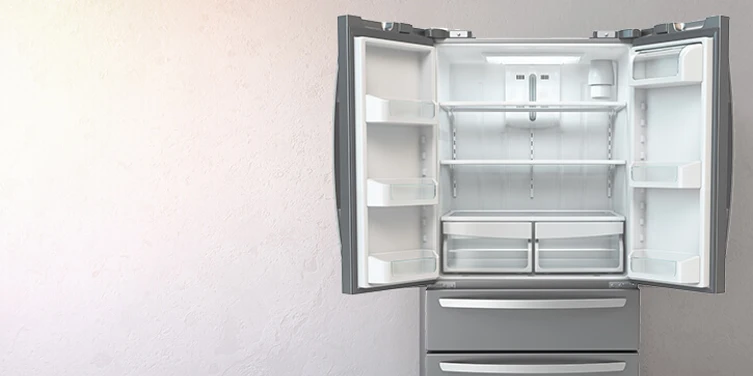How Does a Refrigerator Work?

If you're like most people you don't give much thought to the inner workings of your refrigerator unless it breaks down, or it comes time to replace it. In order to get the most from this invaluable appliance, however, it can be useful to know exactly how it keeps your food cold—and Mr. Appliance® is here to help. Read on to learn everything you need to know about how a refrigerator works, and how it helps your food to keep its cool.
How Does a Refrigerator Work?
A refrigerator stores your food at the optimal temperature, to prevent spoilage and slow down the growth of harmful bacteria. The cycle of refrigeration works by transferring the heat from the inside of the unit to the outside, using the principles of condensation and evaporation.
The main components of your refrigerator are:
Compressor
The compressor is both a pump and a motor, and it is responsible for the circulation of refrigerant throughout the system.
Condenser
The condenser is located on the back outside wall of the refrigerator and helps to release the heat absorbed from inside the refrigerator out into the surrounding air.
Evaporator
The evaporator is housed on the inside of the refrigerator and absorbs the heat contained within it, effectively reducing the interior temperature.
Expansion Device
Liquid refrigerant is carried through a capillary tube which works as an expansion device as it cools the gas, turning it back into a liquid.
Thermostat
The thermostat regulates the temperature inside the refrigerator, engaging the cooling cycle as needed.
How Does Refrigeration Work?
1. Once the temperature inside the refrigerator rises above the set point sensors alert the compressor to engage, and the cooling cycle begins. The unit draws in the cold liquid refrigerant, pressurizes and condenses it, and raises the temperature, turning it into a gas.
2. The compressor pushes the hot gas towards the condenser coils on the exterior of the refrigerator, where it comes in contact with the lower air temperature in the room and reverts back to a liquid state.
3. The cooled liquid continues on its journey toward the evaporator, traveling through the coils on the inside of the refrigerator and freezer compartment.
4. The refrigerant absorbs the heated air from inside the refrigerator, lowering the temperature back to the desired set point.
5. The refrigerant evaporates, turns back into a gas, and returns to the compressor to continue the cycle.
Refrigeration is used in a number of applications and appliances, including heat pumps, air conditioners, refrigerators, and freezers. By extracting heat from one place and moving it to another the cycle of refrigeration helps to cool your home, provide a safe environment for perishable food, and helps with the manufacturing and storage of a number of different everyday products and materials.
Need a Refrigerator Repair?
Do you need refrigerator repair or maintenance? You can schedule service on your schedule with a professional Mr. Appliance technician. Click here to make an appointment online.
 Click to call
Click to call


